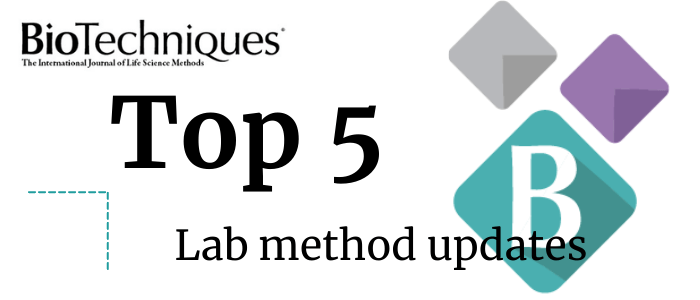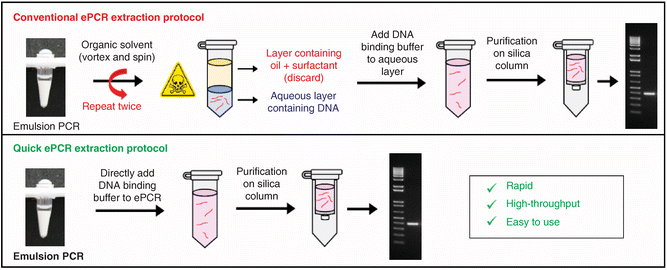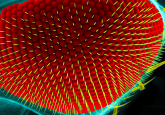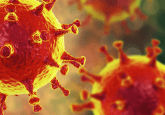Top 5: your pick of BioTechniques

Refer a colleague
As we move into Spring, that means one thing – our 2020 peer-reviewed publications have had time to mature, like a fine multiomics’d cheese, and our Editors have now looked back over what you found the most useful from the last year. Here’s your top picks of lab method updates from 2020!
1. CRISPR vs COVID-19: how can gene editing help beat a virus?
Ever the hot topic, CRISPR has found utility in the fight against COVID-19. In this Technology News feature Jennifer Straiton (Future Science, London, UK) dived into how CRISPR has been used in diagnostics, and the potential for therapeutics based on PAC-MAN.
While this isn’t strictly a lab method update, with over 16,000 readers thus far, this is clearly a must-read!
2. Emulsion PCR made easy
We love how much you still love PCR, the king of biotechniques. Forever evolving to allow for new experiments, emulsion PCR (ePCR) allows the amplification of DNA molecules in physically separated picoliter-volume water-in-oil droplets – avoiding chimeras and other artifacts. However, the method has historically required the use of hazardous solvents and cumbersome purification to recover the products. But no more – this benchmark from Vaishali Verma et al. (University of Delhi South Campus, New Delhi, India) describes an easier and safer extraction protocol, resulting in protocols compatible with cloning and next-generation sequencing.
This ‘shortcut’ (as described by readers on Twitter and exemplified in the graphical abstract below) has been read by over 5000 of you, and comes equipped with a free-to-access protocol available on Figshare.
Verma V, Gupta A, Chaudhary VK. Emulsion PCR made easy. BioTechniques 69(1), 65—70 (2020).
3. A simplified method to produce mRNAs and functional proteins from synthetic double-stranded DNA templates
Plasmid-based cloning is familiar to most working in basic or medical research, and it can also be a nightmare owing to the multiple steps involved. Here, John T Tossberg et al. (Department of Medicine & Vanderbilt University Medical Center, TN, USA) report a new method to synthesize mRNAs from synthetic DNA templates that is both cost- and time-saving. They demonstrated the utility of their technique by constructing five synthetic mRNAs.
The technique is already being used, and with nearly 5000 readers, we look forward to seeing more using this time-saving method.
4. Phagocytosis assays with different pH-sensitive fluorescent particles and various readouts
What’s the best way to investigate phagocytosis? Some methods can struggle to differentiate between cells sticking to the membrane of a phagocyte and those that have been completely internalized. Two types of pHrodo dye have been made available to help this – green and red, but which one is best? In this report, Benjamin Lindner et al. (Boehringer Ingelheim Pharma GmbH & Co. KG, Biberach an der Riss, Germany) provide an answer. Using high-content imaging and flow cytometry, they clarified which pHrodo dye is useful, in which situation.
The group has detailed protocols and readouts for use by those studying phagocytosis. With over 4500 readers thus far, it seems clear this report was required.
5. A simple and reliable method for determination of optimum pH in coupled enzyme assays
Ever asked: what’s the optimum pH for my coupled enzyme assay? It’s an important question, with pH impacting enzyme performance. In this report, Lee Bowman et al. (Birmingham-Southern College, AL, USA), provide you with a simple and reliable method to determine the optimum pH enzymes. While they exemplify the approach with pyruvate kinase, the method is adaptable for various enzymes. Their protocol is freely available on protocols.io.
The method could also be expanded to other parameters – including temperature and salts. With over 4500 readers once again, we’re glad to see you finding the piece useful!
BioTechniques is always looking for the next method to make researchers’ lives easier – be it a small tweak to existing methods, or a brand new method to solve a brand new problem. If you have something you think you would be interested in sharing with laboratory researchers across the globe, get in touch with our Managing Editor Ebony Torrington today.
Please enter your username and password below, if you are not yet a member of BioTechniques remember you can register for free.






